Central and Nothern Europe is not particularly rich in reptiles, and many of the native species are even quite rare and occur only quite locally restricted. In Germany for example, there are only around 13 species, among them five (or possibly six, with an obscure local population of Iberolacerta horvathi in the Northern Limestone Alps) species of lizards, six species of snakes (of which three have only very small to tiny distribution areas) and the European pond turtle Emys orbicularis, which is also nearly fully extinct here.
There is also another one, which is among my favourite native reptiles, the slow worm Anguis fragilis. Besides sand lizards and wall lizards, which are comparably common and numerous in certain areas, they are the only native reptiles I see at least moderately often, yet still only on occasion.
Slow worms are fascinating for many reasons. First of all, they have one of the largest geographical ranges of all reptiles, from the most southern areas of Italy up to northern areas of Sweden and Finland, only surpased by the viviparous lizard Zootoca viviparia.
One reason why they can occur even in very cold areas is probably because they are ovoviviparous, so pregnant females can follow the sun and in this way boost the growth of the embryos, even in areas with short summers.
Besides wall lizards, which sometimes live even right into towns (like an allochthonous population from Northern Italy which lives around the castle of Tübingen and some other areas in the town) and sometimes sand lizards, slow worms are also nearly the only native reptiles here which are sometimes living in comparably densely populated areas. I knew a population which lived (or still lives) in a housing area which had besides some small gardens and hedges next to no green areas, only one small building ground of perhaps 25 x 20 m covered with grass and blackberry.
Slow worms are – as you might imagine form their name – not very fast. They often wiggle in a very stiff and somehow clumsy way, very unlike snakes. The reason for this is not externally visible, but becomes more evident if you touch a slow worm. They feel quite hard, because their whole body is covered by small round osteoderms, which are below the scales. This osteoderms are connected comparably tightly with each other, and can even still preserve the external shape of a dead slow worm, when all soft-tissue inside has already broken down or was eaten away by scavenging insects.
Some years ago I found a half slow worm on a sidewalk next to a garden, perhaps killed by a cat or road-killed by a bike. Some of the scales around the head were lost, and the body shape was somewhat distorted from shrinking, but it was still not very different from those of a living slow-worm, besides being fully hollow at the inside. I have also a 3D X-ray scan of this specimen made via cone beam computed tomographie, but stupidly I had the data not available on my PC when I wrote this blog entry.
Last year I also found a piece of a slow worm on a concrete blog at my garden parcel, possibly placed there by a cat. It had been lying there for quite a while, and it had been warm and rainy for some time, so parts of the scale-armour-like skin areas disarticulated and isolated round osteoderms became visible.
Close up of the osteoderms:
When dead slow worms break down and the scales fall off, you can´t only see those cool osteoderms, but also another rather unsuspected anatomical feature, nasty teeth like tiny curved daggers. Compared to the size of the skull, those teeth are really huge, proportionally well bigger than those of komodo dragons or mosasaurs for example. But you still can´t see them in live slow worms, because they have -like all squamates – well developed lips which cover their teeth. Keep this in mind the next time you see a reconstruction of a mosasaur or Megalania with well visible teeth. That´s not realistic, they had surely like all other squamates lips which covered their teeth, so they were nearly not visible when the mouth was open, and there is no good reason to think it was different in those extinct lineages.
Another, already quite decomposed dead slow worms I found. Those teeth are really nasty.
The other side of the head:
Again a close up of the first mummified specimen. It´s really very very hard to get good photos of this tiny anatomical details, as the whole skull is well under a centimetre in length.
So, for what are those sting-like teeth good for? Slow worms feed mainly on soft-bodied invertebrates like small slugs and earthworms, and the long pointed teeth help to hold slithery prey covered in mucus. I once observed a slow worm eating a huge earthworm which was nearly equal in body diametre and I was really surprised how it was slowly devoured. On occasion they also consume other small invertebrates, whereas predation on other reptiles is extremely rare. There is only a small handful of documented cases in which other reptiles were eaten, like for example small sand lizards or other small slow worms. Here is a photo of such a rare event, an adult slow worm devouring a juvenile of its own species (photo from Wikipedia):
Besides for catching slugs and worms, the long teeth are also used in comment fights between males and during the mating rituals, in which the males bite the females in the head or neck area. Another photo from Wikipedia showing this behavior:
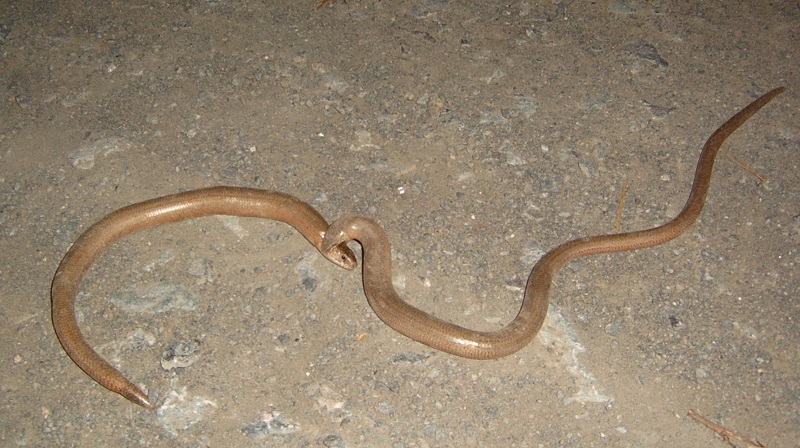
Male slow worm biting female. You can also see very well the difference of the non-autotomized tail of the male and the short regenerated tail of the female on the left.
As a result of this rigorous use of the teeth, some specimens show severe skin-scarring. The scratches on this very large dead-found slow worm are also possibly the result of intraspecific bites, yet I doubt it was the reason why it died, as the scratches are not very deep.
Furthermore, the osteoderms should reduce most damage to superficial skin injuries, and I already wondered if this armoured skin is possibly mainly a defense against the teeth of other slow worms, and to a lesser degree a defense against predators. In sharks females have also usually a much thicker skin than males, because they are often bitten by the males while mating. I also doubt that even this tough skin armour has that much effect against most predators at all, given the very large number of animals which prey on slow worms. The teeth of hedgehogs and small carnivores are well capable to deal with this kind of armour, and it´s also no very effective defense against birds of prey, storks or other larger potential slow worm predators. Nor does it seem to help much against smooth snakes (Coronella austriaca), which are -where they occur in the same area- important predators of slow worms. This surely doesn´t mean the osteoderms have no defensive function against predators at all, but it´s possibly only one of several functions.
Autotomie however seems to play an important role in self-defense, and a large number of slow-worms have regenerated tails. Here is a photo of a freshly autotomized tail I found at my garden parcel, which was still moving at that time.
If you take a close look you can even see the different muscles at the base of the stump:
Another photo of a specimen which obviously lost its tail only a short time before.
Close up of the stump. You can also see where the slow worm was grabbed by a predator:
The species name fragilis already indicates the autotomizing behavior of slow worms. I once found a roadkilled juvenile slow worms which apparantly autotomized in death agony its tail on multiple areas.
Most slow worms are somewhere between 25 and 35 cm, what also depends on the nature of the tail of course, as regenerated tails are often much shorter than the original tails. Some slow worms can however sometimes grow considerably larger. Several years ago I found a monstrously huge specimen during a walk in a vineyard area. It showed no external injuries, only the eyes had already dried, but it had some blood around its nostrils, what could indicate intoxication of some sort, perhaps as a result of insecticides or molluscicides used in the area. Because of its big size and unusally good condition I took it for my collection to store it in a jar with alcohol. It was already quite stiff, so I could not straighten it for a good measurement. Instead I used a piece of thread to measure over the curve of its body. I was highly surprised when I realized the thread was hardly long enough, even more so when I found it was 45 cm in length. This measurement was made quickly and I did not follow the curve of the body that exactly, what resultet in some underestimate of the length. When I later made another measurement with a longer thread and a more exact following of the curves, I came to an incredible 48 cm. That is truely huge, as long as my arm (without the hand).
Here again a photo of the preserved monster specimen:
At that size it was already bigger than every other species of lizard here, even the two species of green lizards hardly reach lengths of 40 cm, but usually stay well shorter. To be fair, their heads and bodies are still somewhat bulkier than those of slow worms. By chance there actually is a very cryptic population of green lizards in that which was just officially verified last year in the area where I also found the giant slow worm. I was quite lucky to discover one of those green lizards and take some very first photos of it.
Another large yet not giant dead-found specimen of 41,7 cm:
Here is a specimen which is more in the upper average range, photographed several years ago with my old mobile phone I had at that time.
I have seen some few specimens of similar sizes as the „monster“ in museum collections like at Copenhagen, Berlin and Vienna, and there are some other specimens on record which actually exceed a full half metre in length. The discovery of an extremely exceptional specimen was published in 2012 in the journal Zeitschrift für Feldherpetology (journal of field herpetology) by Wolfgang Böhme. This particular specimen had a length of 57, 5 cm, what is by the standards of its species truely gargantuan, nearly a small real-life lindworm.
I think it is somewhat erroneous to think that such outsized specimens have to be unusually old. A lot of people are under the impresseion that reptiles, fish and amphibians grow for their whole life and can therefore (theoretically) reach every size. But in reality, that´s a massive simplification to say it at least. First of all the growths of different species can differ highly. Especially many smaller species have more or less determinate growth and most adult specimens in a population have quite similar sizes, independent of age. Some species grow for a longer time and gain even after reaching sexual maturity for some time additional length, sometimes for many years. But even then, growth usually decreases considerably, and the proportional length growth in later years is normally very low or even next to absent. An exceptionally big specimen was most probably already quite big at early age when unusually strong growth had the strongest effect. Of course big size can be an advantage, for example when it is an advantages against predation, what can facilitate over-average life-spans of those specimen. But on the other hand, there will be specimens which never reach exceptionally big sizes, even after many decades.
And slow worms can actually live for many decades. Besides certain testudines and crocodylians, slow worms have one of the longest recorded life-spans of all reptiles. They can reach an age of 46 years at least, and a specimen which was once kept in the Copenhagen Zoo was said to have lived there for 54 years.
Another little known fact about slow worms is that they can be surprisingly colourful. In general they are of mainly greyish, coppery or brownish colour, sometimes with some patterns in the head and neck area, which his often more pronounced in juveniles. Especially juveniles have also often a dark dorsal stripe and often a more marked colour difference between dorsal and ventral sides.
That´s another dead slow worm I found (still fully flexible and without any injuries, possibly another one which died from intoxination):
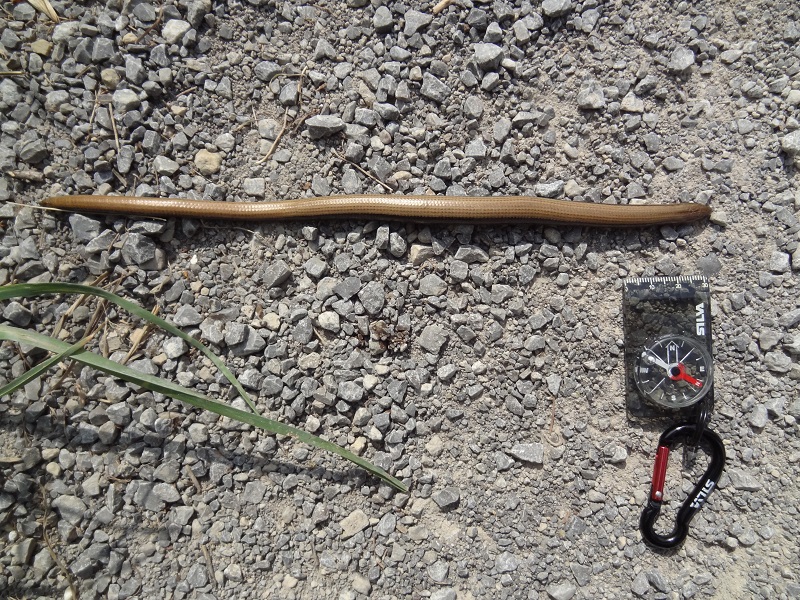
Note the compass with included ruler, this little gadgets are extremely handy and useful to take photos with size comparisons.
The ventral side in this specimen was nearly fully jet-black, what´s also not that common:
But some specimens have also bright blue scales as well. The amount of those blue scales can vary significiantly, sometimes there are only some few and isolated ones, sometimes the spots are all around. I´ve seen so far only two specimens with pronounced blue scales, one of them was a roadkilled specimen which I fond only a few metres next to the monster specimen.
Population screenings in Northern Italy showed that only lesser than 0,8% of the whole slow worm population possess those blue scales, which are usually mainly found in older males. In the related Anguis colchica they are more common, with blue scales occuring even among females, and there is even a specimen on record which had a fully blue belly.
I wrote this blog-post especially for those non-European readers who aren´t familiar with slow worms, but also of course for all other people which have slow-worms around. The next time you see one, keep in mind how awesome and fascinating this little lindworms are.
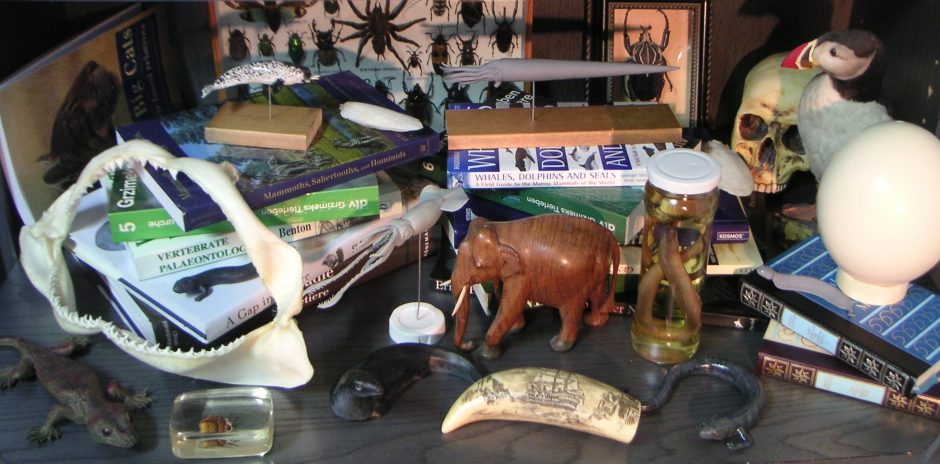
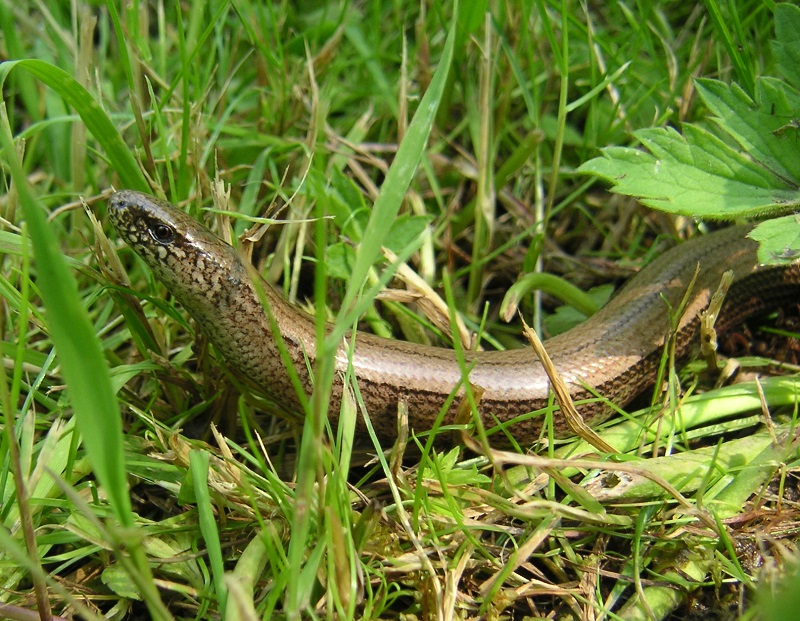
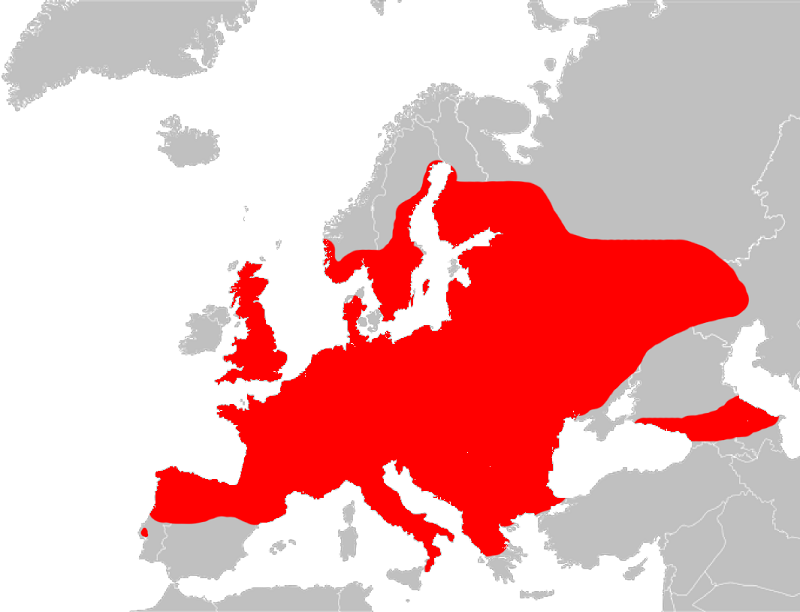
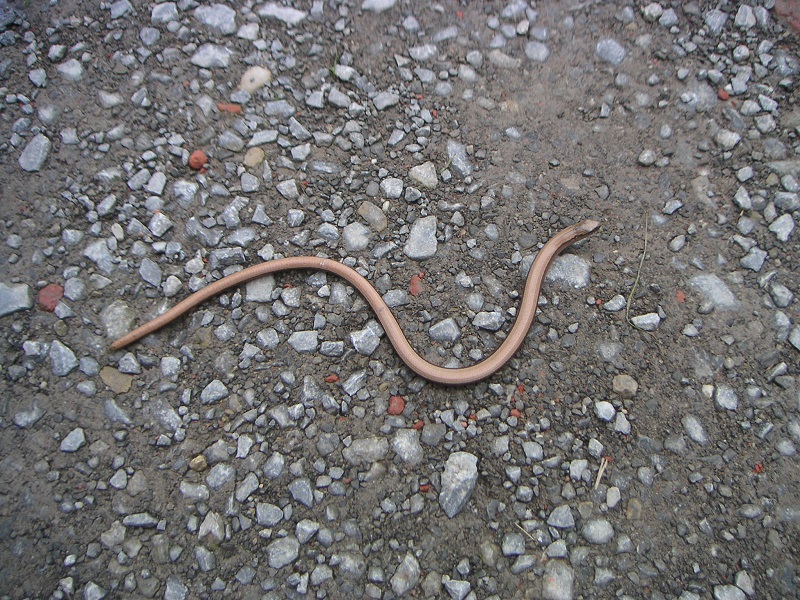
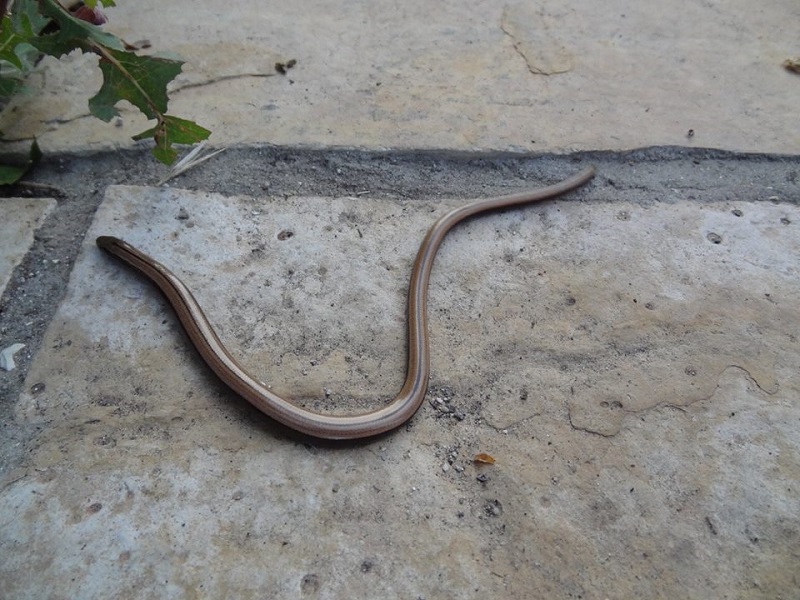
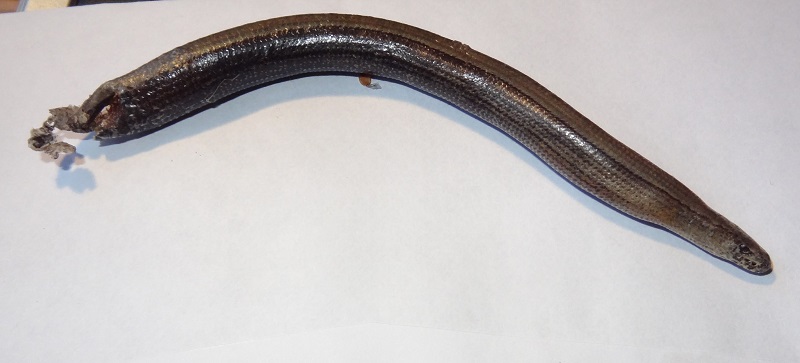
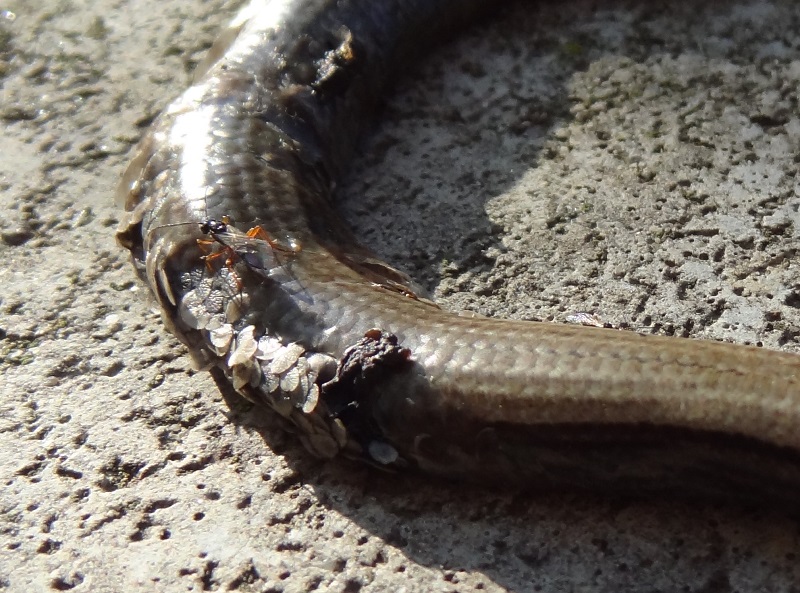

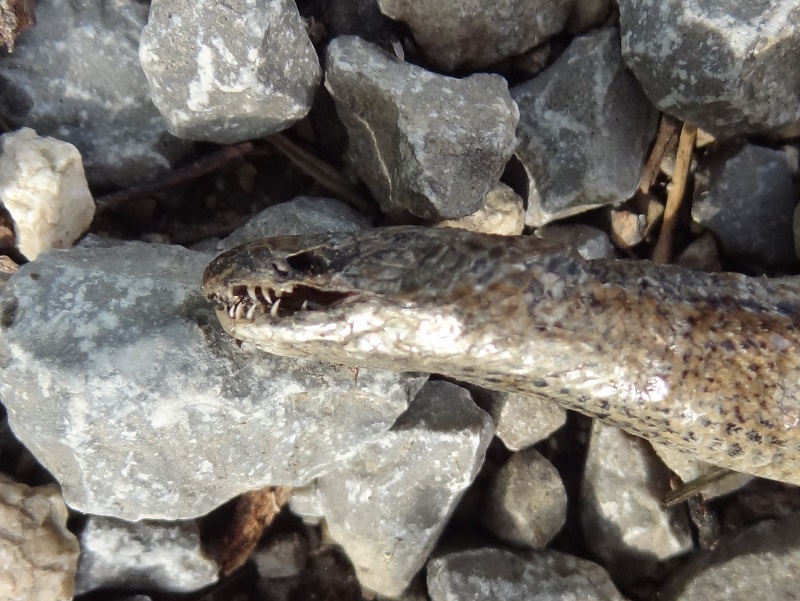
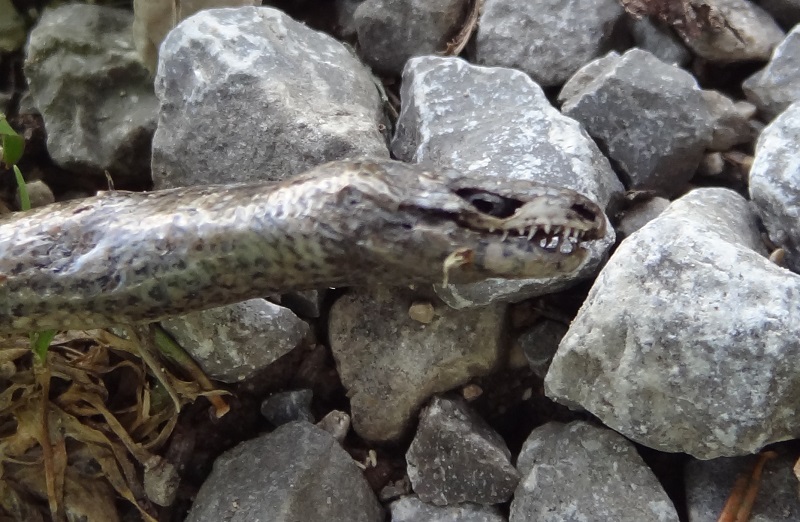
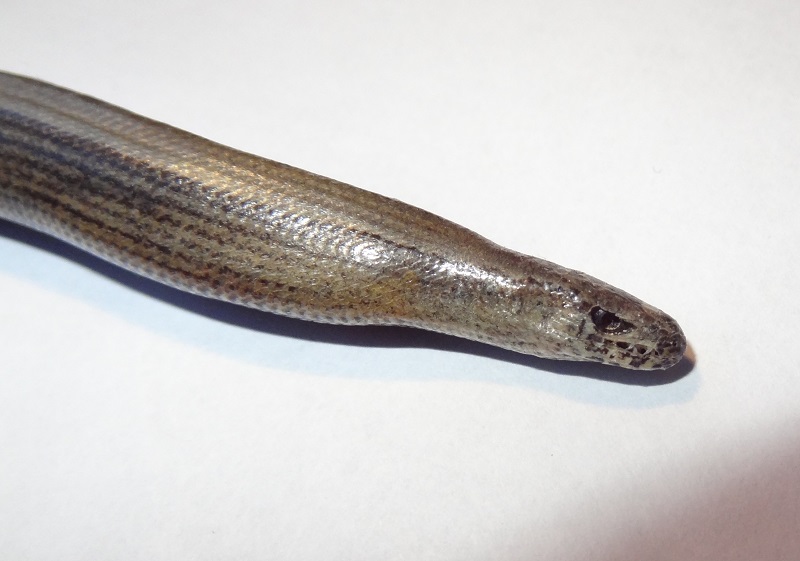
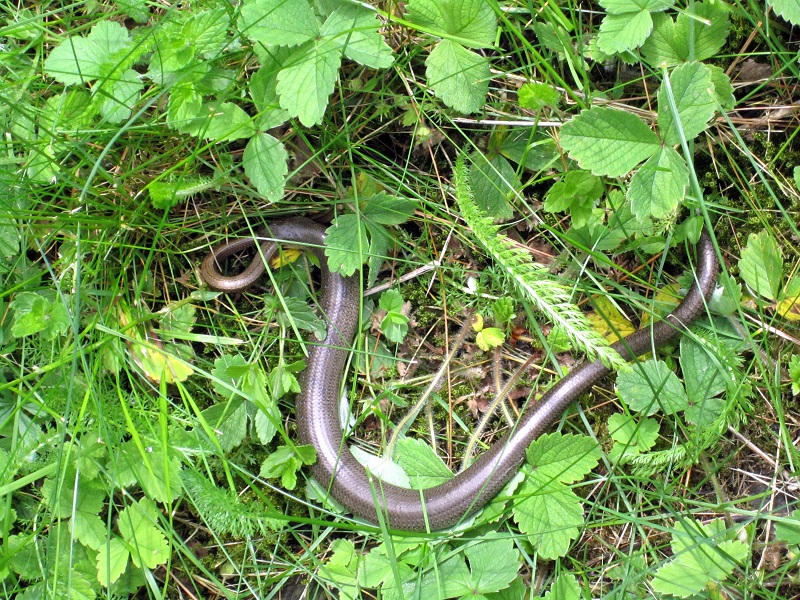
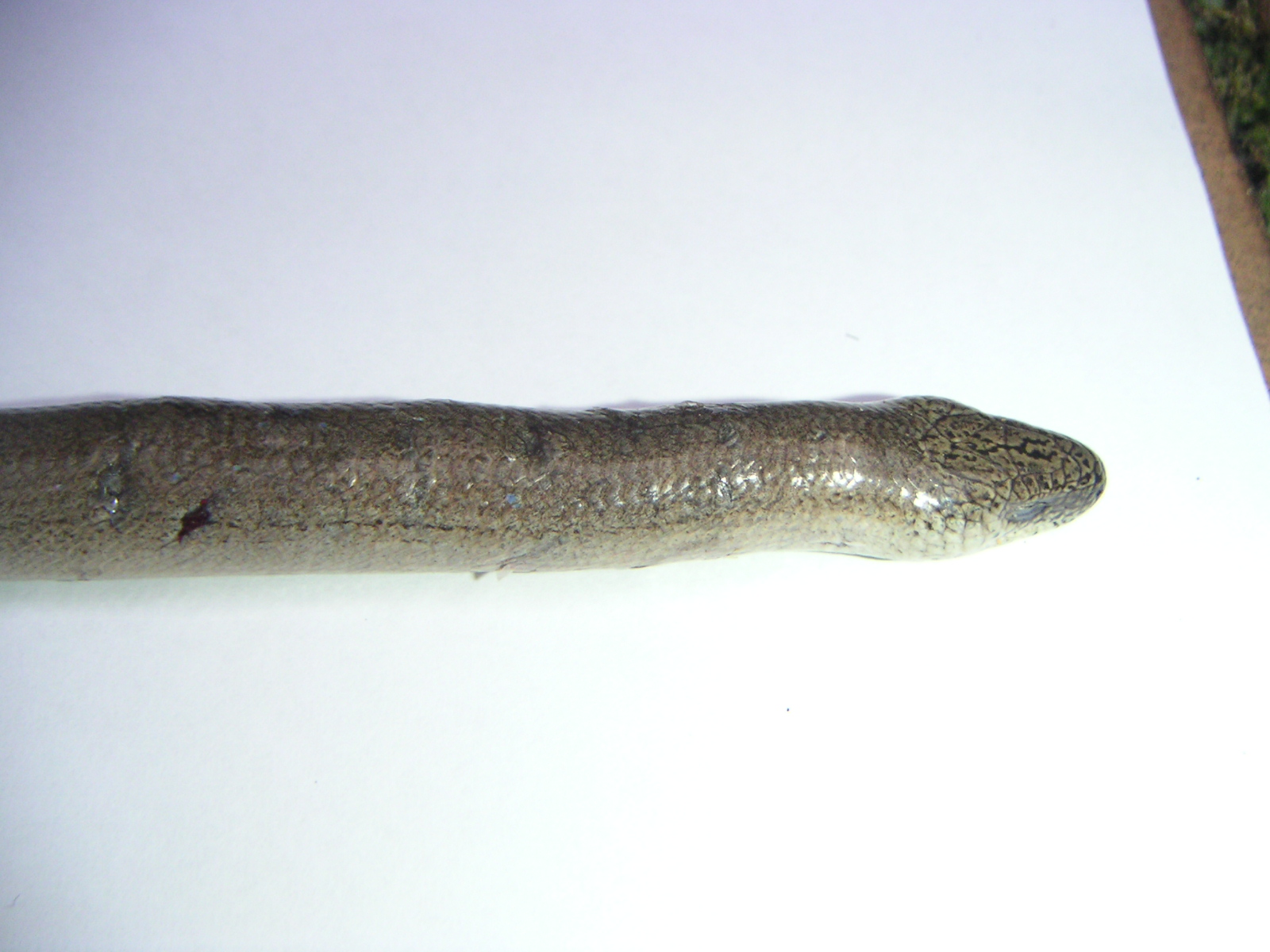
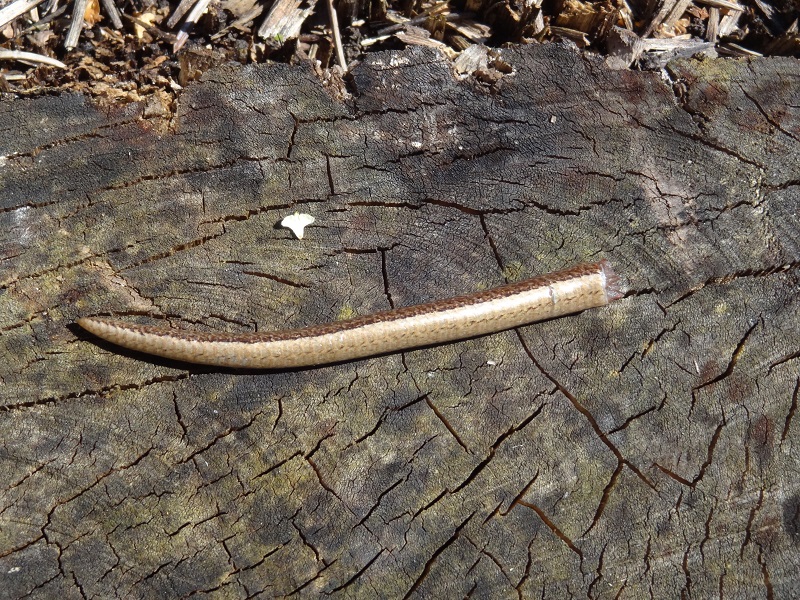
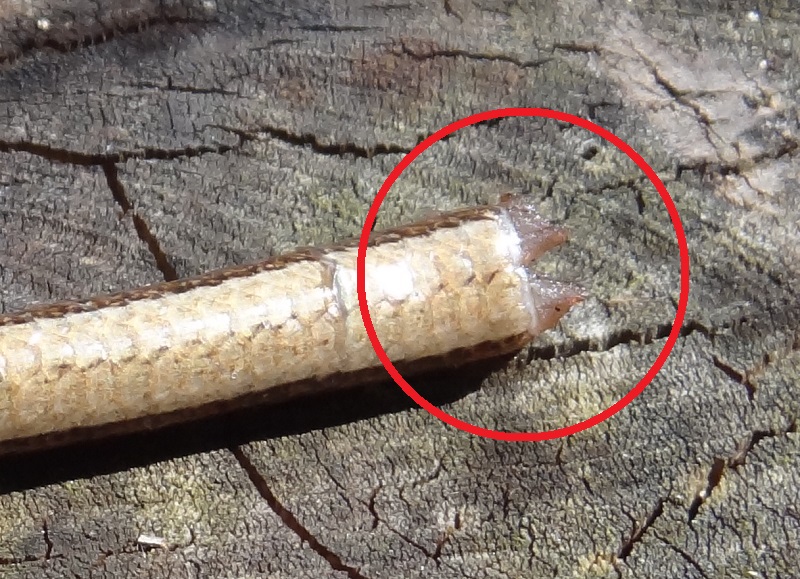
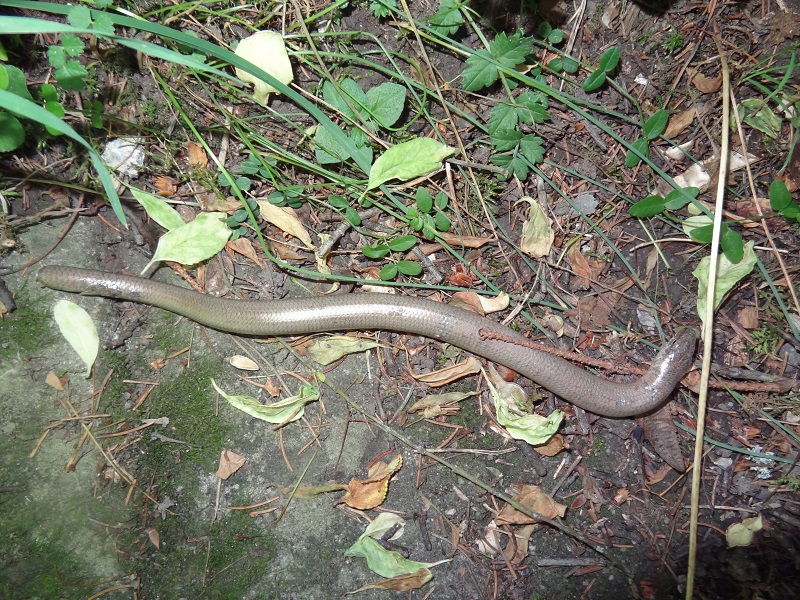
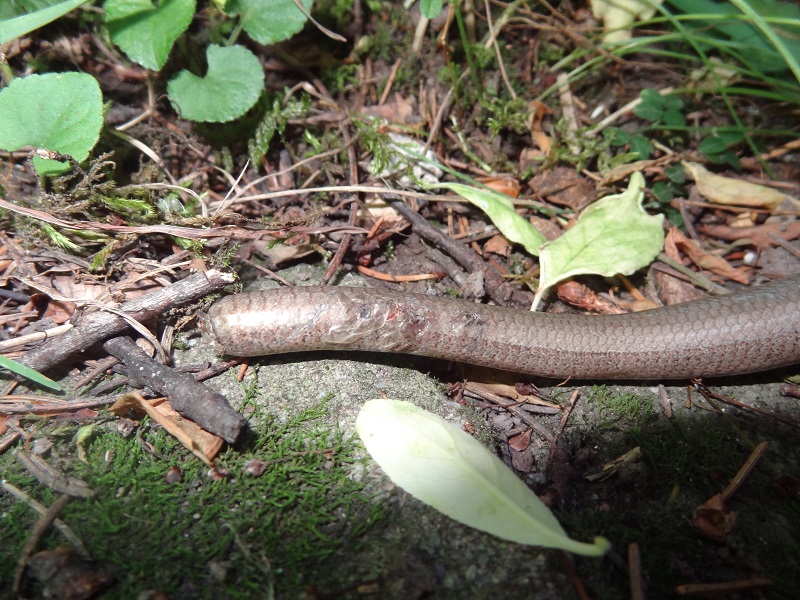
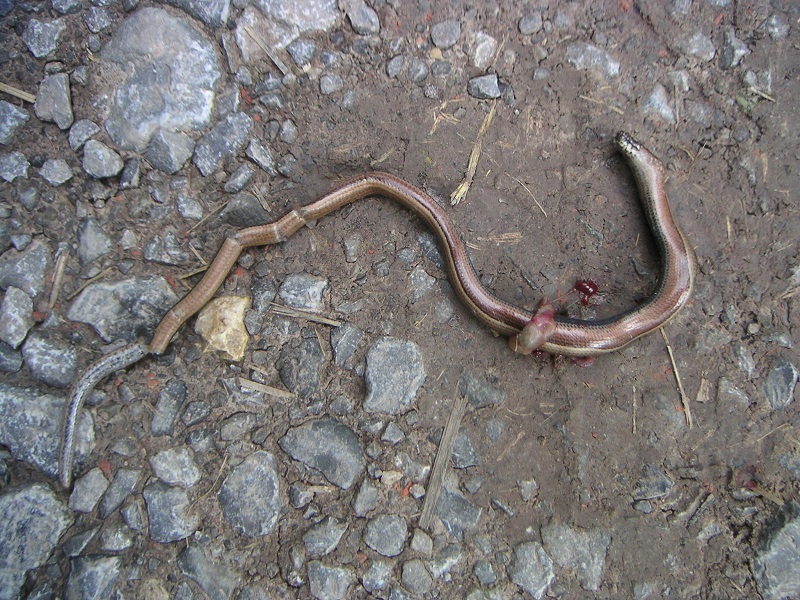
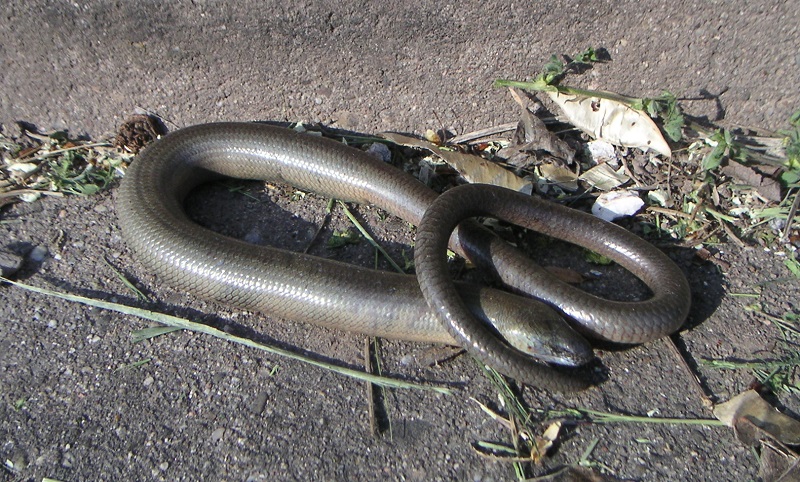
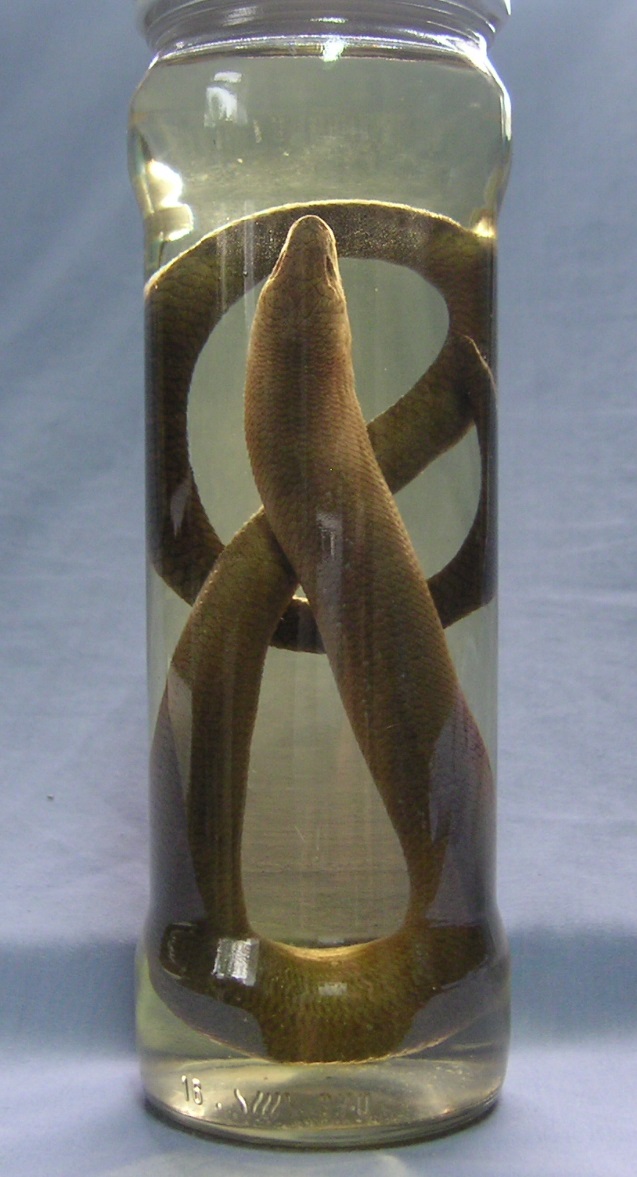


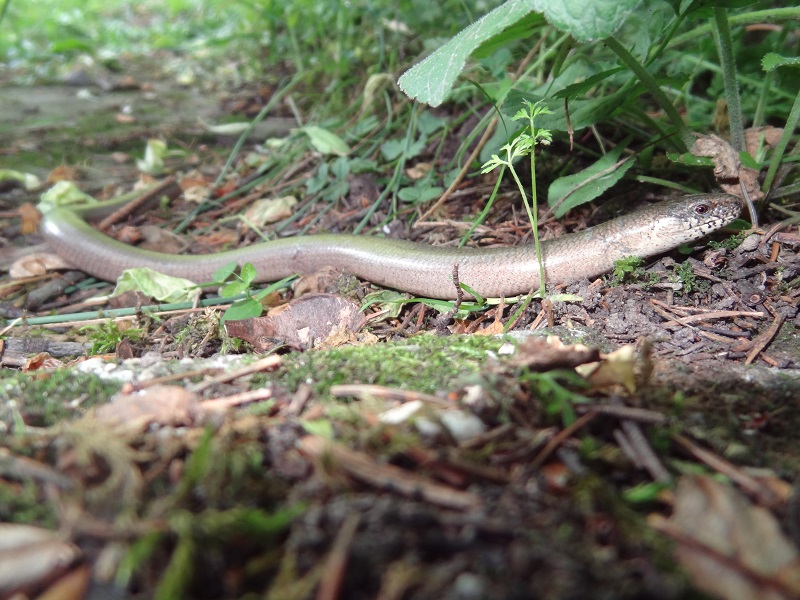
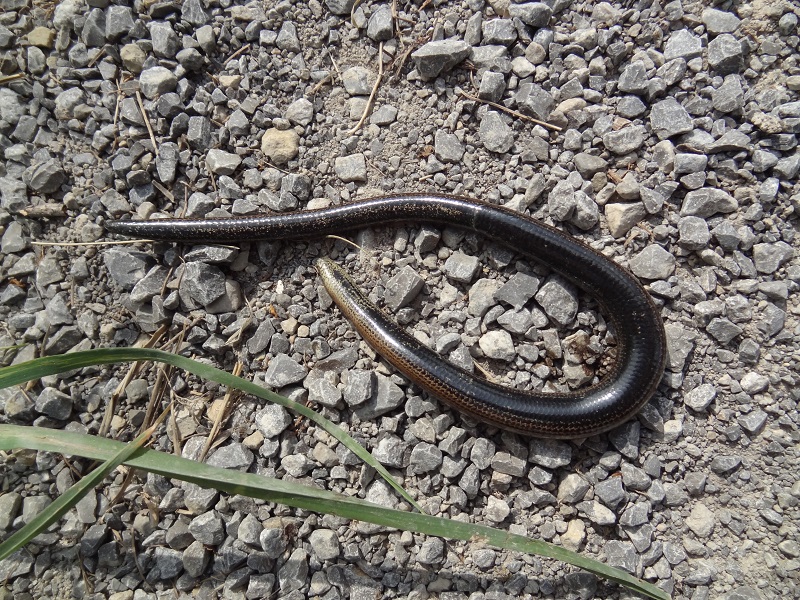
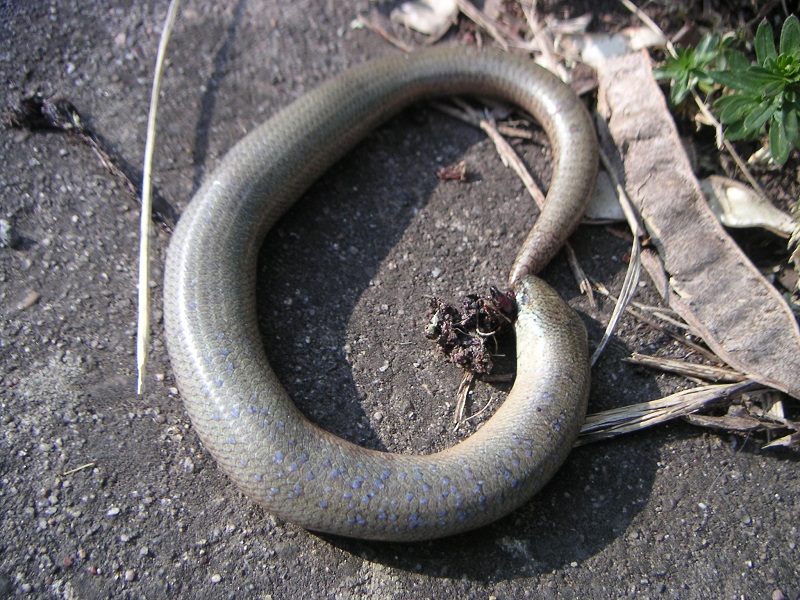
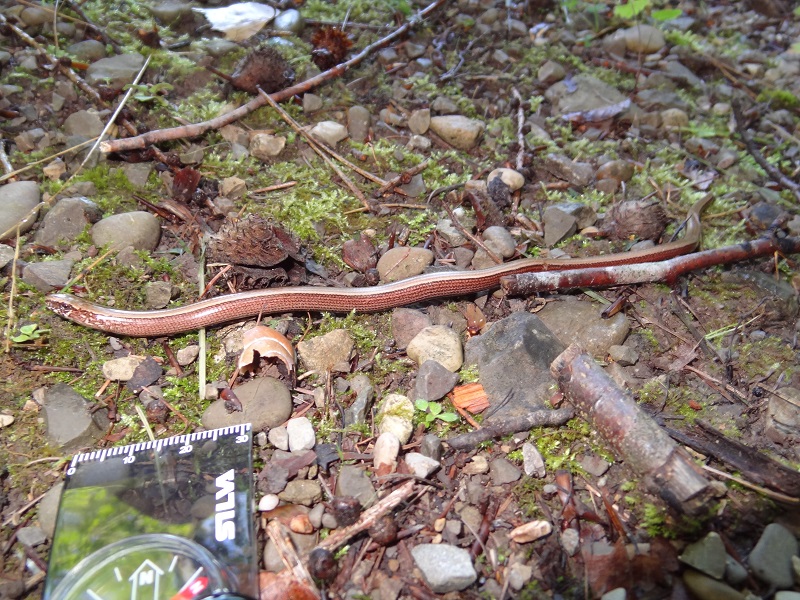
Wirklich schöner Artikel, ich wusste garnicht das Blindschleichen so gigantische Zähne haben.
Das wissen die meisten nicht, Grund genau mal darüber zu schreiben.
Very cool and interesting write up!! Inspiration for Lair of the White Worm? I wonder if those osteoderms play a role in thermoregulation? Ever try putting one under a scope to see if the osteoderms are highly vascularized? Also do slow worms use twist/rotational feeding to wrench apart prey?
I sadly don´t know if the osteoderms are vascularized, but they seem comparably thin, an from what I have seen on the enlarged photos I haven´t seen much indication for this. But perhaps I can anytime find the time for examine one with a microspope. The scan used for the mummified specimen had sadly a comparably lowe resultion, so this doesn´t help.
I have already seen how slow worms deal with large prey, but that was a very long time ago, and I can´t sadly remember of they rotate. But I have even at the largest prey items like proportionally giant worms never seen anything else than complete swallowing. Scheltopusiks however are known to practice some sort of death roll to torn apart pieces of bigger prey items.
Hallo Markus !
Spannender Artikel. Auch ich habe die Bekanntschaft mit „übergroßen“ Blindschleichen gemacht. Als Kind hatte ich ein sehr großes Exemplar gefangen. Dieses Tier war größer als alle anderen Blindschleichen, die ich bis heute zu Gesicht bekommen habe. Natürlich kann ich heute nicht mehr einschätzen, wie groß genau es war. Aber: es gibt ein Foto 🙂 Leider bin ich momentan weit weg von zu Hause, werde ich mich aber hoffentlich beim nächsten Elternbesuch dran erinnern und vielleicht kann dir das Foto zukommen lassen. Es wäre interessant, die Größe zu bestimmten. Für den Fall, dass es nach heutigen Maßstäben tatsächlich noch als übergroßes Exemplar durchginge. Und um die von dir genannte Analogie zum Verbreitungsgebiet der Smarageidechsen zu unterstreichen: Ich fing das große Exemplar nahe einem Dorf meiner Großeltern, das nur einen Katzensprung vom Kaiserstuhl entfernt ist. Smaragdechsen habe ich jedoch auch schon am Baggersee des Nachbardorfes gesehen. Die gesamte Zone liegt (wie du vielleicht weißt) nach meinen Informationen in der wärmsten Region Deutschlands. Ich spekuliere jetzt mal aus dem Bauch heraus. Gibt es zwischen dem Vorkommen von Smaragdeidechsen bzw. großer Blindschleichen und der Temperatur vielleicht irgendeinen Zusammenhang?
Viele Grüße
Peter
hi
i think they are carniverous -saw a large sloworm under a board when looking with grandchildren next to it was a smaller specimen clearly bitten all over by larger one and dead – head was quite flat. put board back went back 2 days later and found large sloworm obviously eating the corpse starting just behuind head it had eaten quite a bit. went off to get a camera but it had gone i do have pictures of the remains. i have previously seen simelar severe biting way beond any logical mating behaviour . A quick search revealed a paper on cuch behaviour in Tutkey amongst a captive population. This was 6.8.2021 devon uk rough grassland – plenty of lizards/sloworms